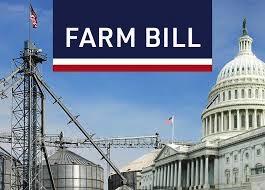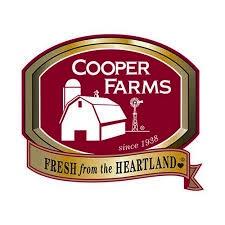Editorial
USDA-APHIS Belatedly Releases Incomplete AI Virus Sequence Data
|
|
 On Sunday, April 21st, USDA-APHIS released 239 genetic sequences relating to H5N1 isolates. The data was released to the National Library of Medicine database as raw sequence data (FASTQ files). The sequences lacked essential supporting information that can be used by molecular epidemiologists to ascertain the sources of the isolates and how they have evolved over time. On Sunday, April 21st, USDA-APHIS released 239 genetic sequences relating to H5N1 isolates. The data was released to the National Library of Medicine database as raw sequence data (FASTQ files). The sequences lacked essential supporting information that can be used by molecular epidemiologists to ascertain the sources of the isolates and how they have evolved over time.
An alternative database, the Global Initiative on Sharing All Influenza Data (GISAID), was established by scientists under the guidance of the World Health Organization to monitor the emergence of both human and animal influenza strains. The objective was to identify viruses with zoonotic and pandemic potential. Information posted to GISAID contains consensus sequences that have been refined and are devoid of contamination and errors. These sequences are supported by the origin of the sample, species and the location and time of collection. The data posted by USDA identifies ‘time’ as 2024 and ‘location’ as USA.
 In late 2019, scientists and regulatory officials worldwide condemned China for reluctance to release sequences and detailed information on SARS-CoV-19 and their subsequent removal of molecular biological information from data sets that they maintained. Are we not in a similar situation? Is this due to institutional ignorance since deliberate obfuscation could never be contemplated by a U.S. agency! Why was USDA-APHIS or ARS holding 239 sequences when the H5N1 HPAI epornitic has persisted since 2022? In late 2019, scientists and regulatory officials worldwide condemned China for reluctance to release sequences and detailed information on SARS-CoV-19 and their subsequent removal of molecular biological information from data sets that they maintained. Are we not in a similar situation? Is this due to institutional ignorance since deliberate obfuscation could never be contemplated by a U.S. agency! Why was USDA-APHIS or ARS holding 239 sequences when the H5N1 HPAI epornitic has persisted since 2022?
Notwithstanding the paucity of data released, molecular epidemiologists were able to draw some conclusions. Dr. Michael Worobey, at the University of Arizona, was able to determine that the most recent common ancestor of the H5N1 isolates from dairy cows was introduced into herds during mid- to late December 2023. This has profound epidemiologic implications suggesting widespread infection, notwithstanding the apparently low morbidity rate in infected herds. The larger question relates to the extent of H5N1virus in U.S. dairy herds given that asymptomatic cows have yielded positive nasal swabs. The revelation that PCR assays on commercial milk have yielded viral RNA, but not live replicating virus in 58 out of 150 samples from ten states is not unexpected and suggests widespread infection. Epidemiologists affiliated to GISAID are eager to access curated sequences to continue studies and to determine the potential for emergence of a human pandemic strain.
On the positive side, only one individual working with dairy cows who demonstrated conjunctivitis has yielded H5N1 virus, but with no evidence of human-to-human transmission. Preliminary studies confirmed that the H5N1 virus isolated from the dairy farm in Texas was similar to the virus isolated from a dairy farm in Michigan that received animals from the index case. The virus isolated from the extensive outbreak in laying hens in Michigan and implicated in a preliminary field investigation of the source of infection conformed to a common cluster. Enigmatically, the genetic sequence from the human case on the Texas dairy farm was sufficiently different from the similar wild bird, cat, cow and chicken sequences suggesting a different origin of infection. Evidently the worker did not contract infection from contact with cows on the index dairy herd in Texas. Dr. Tom Peacock, affiliated with the U.K. Pirbright Institute, noted, “The virus is basically too distant a cousin to be connected directly to the outbreak which either means it is either from a second spillover or that there was an early bifurcation of the cattle sequences.”
Susceptibility of mammals to the avian strain of H5N1 has been known since mid-2023 given isolation from scavenging mammalian species in North America including skunks, raccoons, pumas, coyotes and bears. Emergence of the infection in farmed mink in Spain and in marine mammals was clearly associated with animal-to-animal transmission.
Under the aeg is of the Pan-American Health Organization, scientists in Latin America have made available sequences from marine mammals and migratory birds. They have organized meetings to review findings and to consider contingency plans in the event of an emergence of a zoonitic strain of H5N1. is of the Pan-American Health Organization, scientists in Latin America have made available sequences from marine mammals and migratory birds. They have organized meetings to review findings and to consider contingency plans in the event of an emergence of a zoonitic strain of H5N1.
EGG-NEWS has previously criticized USDA-APHIS for their pedestrian approach to HPAI , comprising a repetitive sequence of diagnosis, depopulation and decontamination. Failure to assign adequate resources to field and molecular biology and an apparent reluctance to aggressively investigate and publish on the epidemiology of avian influenza represents a grievous and ultimately costly omission. The egg-production and turkey segments of the poultry industry have experienced an ongoing epornitic extending over two years and involving depopulation of over 70 million commercial birds. This has been costly to the public sector, to producers and ultimately consumers.
 This criticism is now extended to a lack of transparency with respect to releases on the molecular epidemiology of HPAI and publication of annotated sequences. Dr. Rick Bright who led the Biomedical Advance Research and Development Authority from 2016 to 2020 stated, “It’s so critical that the U.S. Government should be as transparent as they can right now and share sequences and all of the data so the world can look at it and make their own risk assessment and start making their own vaccines if they need to.” Bright continued, “What would we say if this particular virus did get out of control? Would we look back on these last two or three months and say I wish we would have done something else? We must share all these sequences so the world can get ready.” This criticism is now extended to a lack of transparency with respect to releases on the molecular epidemiology of HPAI and publication of annotated sequences. Dr. Rick Bright who led the Biomedical Advance Research and Development Authority from 2016 to 2020 stated, “It’s so critical that the U.S. Government should be as transparent as they can right now and share sequences and all of the data so the world can look at it and make their own risk assessment and start making their own vaccines if they need to.” Bright continued, “What would we say if this particular virus did get out of control? Would we look back on these last two or three months and say I wish we would have done something else? We must share all these sequences so the world can get ready.”
Dr. Worobey noted, “There is a whole community of colleagues around the world who have a lot of experience with influenza and often can see things or conduct analyses that might show something that others have missed.” In the unfortunate event that a zoonotic strain emerges from the current circulating H5N1 in free-living avian and mammalian species or in commercial flocks and herds, administrators at USDA-APHIS will have a lot on their collective conscience. This is attributed to their unconscionable lack of transparency and their inactivity in failing to aggressively investigate the epidemiology of HPAI. The U.S. poultry and dairy industries, consumers, and ultimately taxpayers deserve better.

|
Egg Industry News
Egg Week
|
|
USDA Weekly Egg Price and Inventory Report, May 1st 2024.
Market Overview
- The average wholesale unit revenue values for Midwest Extra-large and Large sizes were down 16.2 percent this past week. Medium size was down 16.5 percent. National wholesale price for large in cartons at $2.50 per dozen was approximately $0.95 per dozen above the 3-year average of $1.55 per dozen and up $1.05 from the corresponding week in 2023 at $1.45 per dozen. This past week shell egg inventory was up by 0.8 percent, moderating a rise of 1.5 percent in stock the previous week.
- Although there has been a weekly increase in pullet flocks transferred to laying houses, hen numbers are constrained by the loss of close to 13 million hens due to HPAI on twelve complexes holding from 250,000 to 2.6 million hens during the 4th Quarter of 2023. Pullets are in short supply with losses of 2.5 million growing birds, mainly in California. Since the beginning of April close to 8.4 million hens collectively have been depopulated in a sequence comprising one complex in Texas and three related facilities under common ownership in Michigan in addition to a breeder complex in New Mexico.
- This past week chains apparently narrowed the spread between delivered cost and shelf price. This could result in a continued reduction in generic stock with a proportional rise in demand but only with constant re-ordering to fill the pipeline through May. Discounters are holding prices on generics influencing mainstream retail stores. Eggs are still highly competitive in price against the comparable costs for other protein foods.
- Total industry inventory was up by 2.8 percent overall this past week to 1.69 million cases with a concurrent 11.5 percent increase in breaking stock, following a 0.2 percent increase during the preceding processing week. Demand for egg products has fallen into May attributed to less home-baking and entertaining. Egg products are required for the food service and manufacturing sectors and for exports that increased in February.
- It is now apparent that the inventory held by chains and other significant distributors may be more important over the short term in establishing wholesale price compared to the USDA regional inventory figures. Changes in stock held by DCs and in the pipeline as determined by weekly orders are probably responsible for small cyclic fluctuation in weekly industry stock, especially into and after a holiday weekend.
 |
- Cases of HPAI in the commercial poultry industry and backyard (non-commercial WOAH) flocks tapered during the first quarter of 2024, coincident with the end of the Fall migration of waterfowl that was extended into late 2023 by mild weather. The emergence of the infection in a large complex with 2 million birds in western Texas suggested a reoccurrence of the epornitic as northward spring migration has commenced. The three subsequent related cases in Michigan involving a total of 6.4 million hens may have commenced as an indirect extension from an infected dairy herd although an epidemiologic evaluation in progress will be required to confirm the source and routes of intra-Company dissemination. The number and extent of future possible outbreaks during the spring and fall months of 2024 cannot be projected but sporadic cases in backyard poultry and close to 40 dairy herds in nine widely diverse states is a cause for concern. More surveillance information should be released by USDA-APHIS as it becomes available concerning the prevalence rate of carriers among resident domestic free-living birds and a review of molecular and field epidemiology for the 2022 spring and fall waves of HPAI. The USDA has yet to identify and release specific modes of transmission for the 2022-2023 epornitic including likely airborne spread from wild birds and their excreta over short distances.
- The current relationship between producers and chain buyers based on a single commercial price discovery system constitutes an impediment to a free market. The benchmark price appears to amplify both downward and upward swings as evidenced over the past two years. A CME quotation based on Midwest Large, reflecting demand relative to supply would be more equitable. If feed cost is determined by CME ingredient prices then generic shell eggs should be subject to a Midwest Large quotation.
- According to the USDA the U.S. flock in production was apparently down by 0.4 million hens (0.1 percent) to a new level of 306.6 million for the week ending May 1st The stated total flock of 311.9 million included about one million molted hens that will resume lay during coming weeks plus 4.5 to 5.0 million pullets scheduled to attain production. Given the latest figures it is estimated that the producing flock is at least 17 to 20 million hens lower than before the onset of HPAI in 2022. In January 2024 the USDA adjusted figures to account for depopulation of 13 million hens spread over the last quarter of 2023. There were evident discrepancies between published figures and the theoretical number of hens over successive weeks taking into account known losses and predetermined pullet replacements. The April loss of 8.4 million hens is not reflected in data released over the past four weeks. It is hoped that the USDA agency responsible for publication of flock size will get their act together and coordinate with APHIS to record the number of depleted flocks and promptly provide accurate data. Figures released on May 1st overestimate flock size
- The ex-farm price for breaking stock (rounded to one cent) was down 14.9 percent to $1.34 per dozen.Checks delivered to Midwest plants were down 18.2 percent to $1.17 per dozen this past week. Prices for breaking stock should follow the wholesale price for shell eggs usually with a lag of about one to two weeks.
The Week in Review
Prices
According to the USDA Egg Market News Reports released on April 29th 2024, the Midwest wholesale price (rounded to one cent) for Extra-large was down 16.1 percent from last week to $2.04 per dozen. Large was down 16.2 percent to $2.02 per dozen. Mediums were down 16.5 percent to $1.92 per dozen delivered to DCs. Prices should be compared to the USDA benchmark average 4-Region blended nest-run cost of 75.3 cents per dozen as determined by the Egg Industry Center based on USDA data for March 2024. This value excludes provisions for packing, packaging materials and transport, amounting to 57 cents per dozen as determined in mid-2023 from an EIC survey (with a low response) and now realistically 60 cents per dozen.
Currently producers of generic shell eggs should be operating with positive margins irrespective of region and customer-supply agreements. The progression of prices during 2023 and 2024 to date is depicted in the USDA chart reflecting three years of data, updated weekly.
 |
The April 29th edition of the USDA Egg Market News Report confirmed that the USDA Combined Region value (rounded to the nearest cent), was unchanged at $2.50 per dozen delivered to warehouses for the week ending April 26th 2024. This average price lags current benchmark Midwest weekly values by one week. The USDA Combined range for Large in the Midwest was $2.41 per dozen. At the high end of the range, the price in the South Central region attained $2.57 per dozen. The USDA Combined Price last week was approximately $0.95 per dozen above the 3-year average of $1.55 per dozen. This past week Midwest Large was approximately $1.05 per dozen above the corresponding week in 2023 that was falling from a peak price of $3.70 per dozen five weeks previously to $1.45 per dozen as production recovered from HPAI depletion but with declining market demand.
 
|
Crop Progress
|
|
Status of the 2024 Corn and Soybean Crops
The USDA Crop Progress Report released on April 29th documented planting for the 2024 soybean and corn season. Farmers are in fields with relatively dry conditions in half of the eight major states producing corn and soybeans allowing rapid seeding of prepared acreage. The “big-eight” (IL, IN, IA, KS, MI, MN, NE and OH) collectively averaged 4.0 (last week 3.5) days suitable for field work this past week ranging from 3.1 days (OH) to 5.2 days (KS)
Based on the sum of the “adequate” and “surplus” categories, surface and subsoil moisture levels were higher than the corresponding week in 2023. For the past week surface and subsoil moisture values were 75 and 71 percent for the two highest categories of ‘Adequate’ and ‘Surplus’. These levels were higher than the previous year with values of 72 and 62 percent respectively for the two highest categories, demonstrating an acceptable pre-planting situation.
It is to early in the expected transition to a La Nina event to predict any impact on crop condition in coming months. If prolonged dry and hot weather in corn and soy areas occurs, yield will be depressed depending on timing and severity. A long-range forecast in the form of two charts is provided predicting rainfall and temperature during the growing season.
Reference is made to the April 11th WASDE Report #647 under the STATISTICS TAB and the weekly Commodity, Economy and Energy Report in this edition, documenting acreage to be harvested, yields, weekly prices and ending stocks.
| |
WEEK ENDING |
|
|
Corn Status (18 states)
|
March 31st 2024
|
April 7th 2024
|
5-Year Average
|
|
Corn Planted (%)
|
12
|
27
|
22
|
|
Corn Emerged (%)
|
3 |
7 |
4 |
| |
|
|
|
| Soybean Status (18 states) |
|
|
|
|
Soybean planted (%)
|
8
|
18
|
10
|
| |
|
|
|
|

|
|
|
Crop Condition
(pending USDA reports)
|
V. Poor |
Poor
|
Fair
|
Good |
Excellent |
|
Corn 2024 (%)
|
|
|
|
|
|
| Corn 2023 (%) |
|
|
|
|
|
| |
|
|
|
|
|
|
Soybeans 2024 (%)
|
|
|
|
|
|
| Soybeans 2023 (%) |
|
|
|
|
|
|
|
|
|
Parameter 48 States
|
V. Short |
Short
|
Adequate
|
Surplus |
| Topsoil Moisture: |
|
|
|
|
|
Past Week
|
6
|
19
|
62
|
13
|
| Past Year |
10 |
18 |
60 |
12 |
| Subsoil Moisture: |
|
|
|
|
|
Past Week
|
7
|
22
|
61
|
10
|
| Past Year |
13 |
20 |
57 |
10 |
| |
|
|
|
|
|
 |
|
|
EGG-NEWS will report on the progress of the two major crops as monitored by the USDA through to the end of the 2024 harvest in November.

|
Rep. David Scott Urges Bipartisan Approach to Farm Bill
|
|
 Representative David Scott (D-GA) has urged compromise with respect to passage of the delayed farm bill. At issue is a demand by the majority members of the House Agricultural Committee to cut $30 billion from the Thrifty Food Plan and also to transfer funding from land conservation to support crop subsidies. The majority is also promoting a bipartisan approach to apply Commodity Credit Corporation funds for livestock and crop support in the event of national disasters or trade wars. Representative David Scott (D-GA) has urged compromise with respect to passage of the delayed farm bill. At issue is a demand by the majority members of the House Agricultural Committee to cut $30 billion from the Thrifty Food Plan and also to transfer funding from land conservation to support crop subsidies. The majority is also promoting a bipartisan approach to apply Commodity Credit Corporation funds for livestock and crop support in the event of national disasters or trade wars.
 A 22-year member of the House Agriculture Committee, Rep. Scott “condemns the politics of division” and warns that the House will not approve a partisan bill, a clear message to Chairman, Rep. Glenn Thompson (R-PA) who intends moving the legislation out of Committee during May. A 22-year member of the House Agriculture Committee, Rep. Scott “condemns the politics of division” and warns that the House will not approve a partisan bill, a clear message to Chairman, Rep. Glenn Thompson (R-PA) who intends moving the legislation out of Committee during May.

|
Bovine Influenza-H5N1: An Additional Justification for Pasteurization
|
|
 Following the emergence of bovine influenza-H5N1, a survey was conducted that confirmed the presence of RNA of influenza H5 in commercial milk. Fifty-eight out of 150 samples representing the pooled production of ten states yielded evidence of infection. Expectedly no viable virus was detected since any virus present in raw milk would have been inactivated by pasteurization. Following the emergence of bovine influenza-H5N1, a survey was conducted that confirmed the presence of RNA of influenza H5 in commercial milk. Fifty-eight out of 150 samples representing the pooled production of ten states yielded evidence of infection. Expectedly no viable virus was detected since any virus present in raw milk would have been inactivated by pasteurization.
The situation with raw milk is, however, questionable since transmission from infected dairy cows to consumers is possible. The H5N1 virus that evolved in migratory waterfowl and marine birds has adapted to mammalian hosts including marine mammals, scavenging terrestrial animals, farmed mink and now dairy goats and cows. Obviously in the case of marine mammals, captive mink and dairy herds, animal-to-animal transmission is occurring. Although distribution and consumption of raw milk is limited, recent legislation in many states based on the libertarian principle of “freedom to be infected” will increase  consumption of an infected food product. A potentially infectious virus is now added to the risk of known bacterial infections, including listeriosis, salmonellosis, STEC colibacillosis and campylobacteriosis. consumption of an infected food product. A potentially infectious virus is now added to the risk of known bacterial infections, including listeriosis, salmonellosis, STEC colibacillosis and campylobacteriosis.
The FDA is currently evaluating milk from a large national sample and will release the results in the “next few days to weeks”. The National Milk Producers Federation noted, “As this situation continues to evolve, our dairy organizations try to discourage the consumption of raw milk and recommend that all raw milk and raw milk components be heat treated to a temperature and for a duration that kills harmful pathogenic bacteria and other microorganisms including bovine influenza virus.” The position of this commentator is that supplying raw milk to children is a form of abuse.

|
Hotraco Agri to Present Seminar on Egg-collection Systems
|
|
 Hotraco Agri will present an open seminar in Portland, IN. on June 6th at the Holiday Inn Express and Suites. The program will feature Hotraco Central Egg Collection and a new Egg Flow Control System. Hotraco Agri will present an open seminar in Portland, IN. on June 6th at the Holiday Inn Express and Suites. The program will feature Hotraco Central Egg Collection and a new Egg Flow Control System.
 Speakers will include Frank Schreurs, Sale Director and Eric Hagens, Product Manager at Hotraco. Topics to be reviewed include technology of egg collection to achieve optimal egg flow. Speakers will include Frank Schreurs, Sale Director and Eric Hagens, Product Manager at Hotraco. Topics to be reviewed include technology of egg collection to achieve optimal egg flow.  These aspects of the management of in-line complexes are important in reducing shell downgrades and also attaining high grader efficiency to reduce labor costs. For further information and registration access www.hotraco-agri.com These aspects of the management of in-line complexes are important in reducing shell downgrades and also attaining high grader efficiency to reduce labor costs. For further information and registration access www.hotraco-agri.com

|
WunderEggs Wins Albertsons Innovation Contest
|
|
 Crafty Counters, Inc. producers of WunderEggs won the second Annual Innovation Launchpad at the Natural Products, Expo-West held in Anaheim, CA. The product comprises a plant-based egg substitute containing almonds, coconut milk, spices, and salt. From the illustration the product resembles the plastic food displayed in front windows of restaurants in Japan Crafty Counters, Inc. producers of WunderEggs won the second Annual Innovation Launchpad at the Natural Products, Expo-West held in Anaheim, CA. The product comprises a plant-based egg substitute containing almonds, coconut milk, spices, and salt. From the illustration the product resembles the plastic food displayed in front windows of restaurants in Japan
 Recognition of the product together with a $163,000 prize from Albertson’s Corp has increased awareness of WunderEggs and has generated orders. Recognition of the product together with a $163,000 prize from Albertson’s Corp has increased awareness of WunderEggs and has generated orders.
The question remains as to the price of the product and also nutritional value compared to real eggs. It is understood that WunderEggs is available as a hard-boiled presentation that limits servings that could be achieved with conventional eggs and egg liquids.

|
Zipline Completes One Million Drone Deliveries
|
|
 Zipline, a pioneer in drone delivery, has announced completion of one million deliveries on behalf of major retailers including Walmart and various health systems. Zipline recently entered into agreements with Panera Bread and Jet’s Pizza for home deliveries in select markets. Zipline, a pioneer in drone delivery, has announced completion of one million deliveries on behalf of major retailers including Walmart and various health systems. Zipline recently entered into agreements with Panera Bread and Jet’s Pizza for home deliveries in select markets.

By the end of summer, Zipline will have expanded delivery to serve 30 million in ten states.

|
Sanovo Training Program
|

|
Chipotle Posts Q1 FY 2024 Results
|
|
In an April 24th release, Chipotle Mexican Grill (CMG) reported on the 1st quarter of fiscal 2024 ending March 31st.

For the period, the company earned $359 million on total revenue of $2,702 million including delivery payments, generating a diluted EPS of $13.01. For comparable Q1 of fiscal 2023, Chipotle earned $292 million on total revenue of $2,369 million with a diluted EPS of $10.50.
Total revenue increased by 14.1 percent over Q1 FY 2023 and comparative same store sales were up by 7.0 percent. Digital sales represented 37 percent of revenue in the most recent quarter. Operating margin increased from 25.6 percent to 27.5 percent in Q1 2024.

During the Q1, Chipotle opened 47 new stores, with 43 equipped for drive-through service. Chipotle operates 3,484 stores with average sales of $3.1 million.
In commenting on results, Brian Niccol, Chairman and CEO stated "We had another outstanding quarter driven by our improvement in throughput and successful marketing initiatives, including Braised Beef Barbacoa and Chicken Al Pastor, which drove strong sales and transactions. The results we are seeing from our focus on developing exceptional people, preparing delicious food and fast throughput gives me confidence that we can achieve our long-term target of more than doubling our business in North America and expanding internationally,"
For 2024 Management projected a sales increase of “mid to high single digits,” a range of 285 to 315 new stores with 80 percent equipped for drive through delivery.
On March 31st Chipotle Mexican Grill posted assets of $8,411 million with long-term lease obligations of $3,903 million. Market capitalization was $87,540 million on April 26th. During the past 52-weeks, CMG has traded over a range of $1,540 to $3,200  with a 50-day moving average of $2,817. CMG closed pre-release on April 24th at $2,933 but rose on the open on April 25th post-release to $3,000, rising subsequently with the market to close at $3,188 on April 26th. On a trailing twelve-month basis, operating margin was 16.5 percent and profit margin 12.7 percent. The Company generated returns of 13.5 percent on assets and 44.4 percent on equity. with a 50-day moving average of $2,817. CMG closed pre-release on April 24th at $2,933 but rose on the open on April 25th post-release to $3,000, rising subsequently with the market to close at $3,188 on April 26th. On a trailing twelve-month basis, operating margin was 16.5 percent and profit margin 12.7 percent. The Company generated returns of 13.5 percent on assets and 44.4 percent on equity.

|
Restaurant Brands International Posts Q1 FY 2024 Financial Results
|
|
In an April 30th release, Restaurant Brands International Inc. (QSR) posted financial results for the 1st quarter of FY 2024. Along with other QSRs and casual dining competitors, the Company and its franchisees among five operating divisions are subject to the pressures of increased costs for food, packaging and labor in a competitive environment restrained by inflation that is impacting discretionary spending by consumers. The newly formed International Division faces geopolitical headwinds and the challenges of currency fluctuation.

For the 1st Quarter of FY 2023 ending March 31st 2024 the Company attained revenue consistent with consensus estimates but beat on EPS. Net income was $328 million on total revenue of $1,739 million. Comparable figures for the 1st quarter of FY 2023 were net income of $272 million on total revenue of $1,590 million. Diluted EPS attained $0.72 for the most recent quarter compared to $0.61 for the corresponding 1st quarter of FY 2023.
For the 1st quarter, system-wide sales increased by 9.4 percent. Comparing Q1 FY 2023 with Q1 2024, operating margin increased from 25.1 percent to 31.2 percent for the most recent quarter.
Segment results comprised:-
Tim Horton’s: Sales, $1,725 million; adjusted operating income (AOI), $224 million; Comparable store sales increase, 6.9 percent with 4,505 stores
Burger King: Sales $2,753 million; AOI, $106 million; Comparable store sales increase 3.8 percent with 7,139 stores
Popeye’s LA Kitchen: Sales, $1,517 million; AOI, $58 million; Comparable store sales increase, 5.7 percent with 3,412 stores
Firehouse Subs: Sales, $301 million; AOI, $10 million; Comparable store sales increase, 0.3 percent with 1,277 stores.
International: Sales, $4,216 million; AOI, $142 million; Comparable store sales increase, 4.2 percent with 14,780 stores
 Josh Kobza , CEO of RBI commented Josh Kobza, Chief Executive Officer of RBI commented, "I am proud of the hard work our teams and franchisees are doing to deliver high-quality products, great service and a compelling value proposition for guests every day. Our results are a reflection of their efforts and the strong foundation we have built that sets us up to drive continued improvements in franchisee profitability and deliver our long-term outlook." Josh Kobza , CEO of RBI commented Josh Kobza, Chief Executive Officer of RBI commented, "I am proud of the hard work our teams and franchisees are doing to deliver high-quality products, great service and a compelling value proposition for guests every day. Our results are a reflection of their efforts and the strong foundation we have built that sets us up to drive continued improvements in franchisee profitability and deliver our long-term outlook."
On March 31st 2023, QSR posted assets of $23,145 million of which $16,672 million comprised goodwill, lease obligations and intangibles against long-term debt and leases of $15,077 million. The Company had an intraday market capitalization of $23,370 million on April 30th. QSR trades with a forward P/E of 15.5 and has ranged over a 52-week period from $61.77 to $83.29 with a 50-day moving average of $76.60. On April 29th QSR closed at $$73.85 but opened higher post release closing on April 30th at $76.13. Twelve-month trailing operating margin was 27.0 percent and profit margin 17.0 percent. Return on assets over the trailing twelve months was 5.8 percent and the return on equity 38.2 percent.

|
McDonald’s Corporation Reports on Q1 FY 2024
|
|
 In a pre-open release dated April 30th 2024 McDonald’s Corporation, a bellwether for the QSR segment of the restaurant industry, reported results for the 1st quarter of FY 2024 ended March 31st 2024.The Company disappointed on revenue, earnings and sales growth. For the period, the Company earned $1,929 million on total revenue of $6,169 million with a diluted EPS of $2.66. Comparable figures for the 1st quarter of fiscal 2023 were net income of $1,802 million on total revenue of $5,898 million with a diluted EPS of $2.45. In a pre-open release dated April 30th 2024 McDonald’s Corporation, a bellwether for the QSR segment of the restaurant industry, reported results for the 1st quarter of FY 2024 ended March 31st 2024.The Company disappointed on revenue, earnings and sales growth. For the period, the Company earned $1,929 million on total revenue of $6,169 million with a diluted EPS of $2.66. Comparable figures for the 1st quarter of fiscal 2023 were net income of $1,802 million on total revenue of $5,898 million with a diluted EPS of $2.45.
Revenue for Q1 fell by 4.6 percent but operating margin advanced from 42.9 percent for Q1 of 2023 to 44.3 percent for the most recent quarter. Gross margin for Company-operated stores was unchanged at 13.5 percent for both quarters attributed food ingredient deflation and control of costs for packaging, rationalization of menus to offset increased labor cost. The Accelerating the Arches efficiency initiative, maintained traffic assisted by the benefit of promotions. The Company may be benefitting from trade-down from restaurant dining in the demographic with an annual income of $100,000.
 In commenting on results, Chris Kempczinski, president and CEO stated, “Our global comparable sales growth in the first quarter marks 13 consecutive quarters of positive comparable sales growth with 30% growth over the last 4 years,” He added “As consumers are more discriminating with every dollar that they spend, we will continue to earn their visits by delivering leading, reliable, everyday value and outstanding execution in our restaurants. As we look to the rest of 2024 and beyond, we remain focused on leveraging the competitive advantages within our Accelerating the Arches plan and growing QSR market share to drive long-term growth.” In comments on the investor call Kempczinsky stated “Consumers continue to be even more discriminating with every dollar that they spend as they faced elevated prices in their day-to-day spending, which is putting pressure on the QSR industry." This suggests that McDonald’s and competitors have reached a limit with increases in menu prices consistent with a divergence in cost of food-at-home and in QSRs and casual dining restaurants. In commenting on results, Chris Kempczinski, president and CEO stated, “Our global comparable sales growth in the first quarter marks 13 consecutive quarters of positive comparable sales growth with 30% growth over the last 4 years,” He added “As consumers are more discriminating with every dollar that they spend, we will continue to earn their visits by delivering leading, reliable, everyday value and outstanding execution in our restaurants. As we look to the rest of 2024 and beyond, we remain focused on leveraging the competitive advantages within our Accelerating the Arches plan and growing QSR market share to drive long-term growth.” In comments on the investor call Kempczinsky stated “Consumers continue to be even more discriminating with every dollar that they spend as they faced elevated prices in their day-to-day spending, which is putting pressure on the QSR industry." This suggests that McDonald’s and competitors have reached a limit with increases in menu prices consistent with a divergence in cost of food-at-home and in QSRs and casual dining restaurants.
For the fourth quarter of FY 2023, McDonald’s posted comparable store sales growth in the U.S. of 2.5 percent with comparable store sales growth for the international operated markets segment of 2.7 percent and with global comparable store sales growth of 1.9 percent. The International Developmental Licensed Market Segment posted a 0.2 percent decline in comparable sales due to turbulence in the Middle East but offset by South Korea and Japan.
Projections for 2024 in the SEC 8K report included net restaurant expansion contributing 2.0 percent to system wide sales with an operating margin of mid to high 40 percent. On December 31st 2023 there were 41,822 McDonald’s locations. Restaurant breakdown included 13,457, U.S.; 10,263 International operated and 18,102, International Developmental Licensed. During 2024 the Company intends to open 1,600 new restaurants globally. According to the report most will be traditional in design but the Company will consider alternatives including a test of a small free-standing ‘CosMC’ format.
McDonald’s Corporation had a market capitalization of $197,230 million on April 30th 2024. Total assets on December 31st 2023 amounted to $56,146 million of which 24.0 percent comprised lease right-of-use assets. Long-term debt and lease obligation were $50,211 million. MCD has ranged over the past 52-weeks from $245.73 to $302.39 with a 50-day moving average of $281.51. MCD trades with a forward P/E ratio of 21.9. The 12-month trailing operating margin was 43.6 percent and profit margin, 33.2 percent. Return on assets was 13.7 percent. Prior to release MCD closed on April 29th at $273.46 but opened lower, post-release on April 30th at $269.16, regaining the loss by noon on a down-market.

|
Bunge Posts Q1 FY 2022 Financial Results
|
|
 In an April 24th release, Bunge Limited (BG) posted financial results for the 1st quarter of Fiscal 2024. This Company can be regarded as a bellwether for ‘Mega-Ag’ and the commodities sector. Along with competitors ADM, Cargill, Cofco and Dreyfus, all are subject to the risks of currency fluctuation, geopolitical events, climatic extremes, and increased cost of ingredients, labor and transport in a competitive world environment still restrained by COVID and conflict in the Ukraine. In an April 24th release, Bunge Limited (BG) posted financial results for the 1st quarter of Fiscal 2024. This Company can be regarded as a bellwether for ‘Mega-Ag’ and the commodities sector. Along with competitors ADM, Cargill, Cofco and Dreyfus, all are subject to the risks of currency fluctuation, geopolitical events, climatic extremes, and increased cost of ingredients, labor and transport in a competitive world environment still restrained by COVID and conflict in the Ukraine.
For the 1st Quarter of FY 2024 ending March 31st, net income was $344 million on total revenue of $13,417 million. Comparable figures for the 1st quarter of fiscal 2023 ending March 31st were net income of $632 million on total revenue of $15,328 million. Diluted EPS fell from $4.29 for the 1st quarter of fiscal 2023 to $1.68 for the most recent quarter. Revenue was down 12.5 percent from Q1 2023. Gross margin declined from 7.7 to 6.5 percent and operating margin fell from 5.4 to 3.3 percent for the most recent quarter compared to Q1 FY 2023.
The Agribusiness segment generated sales of $9,740 million with an EBIT contribution of $454 million; Oils and Refining with revenue of $3,240 and a EBIT contribution of $359 million; Milling revenue of $381 million with EBIT contribution of $60 million.
 In commenting on results Greg Heckman, CEO, commented “We are pleased with our first quarter results, which reflect our team’s strong execution in a more balanced market environment. During the quarter we invested further in our pipeline of growth projects and made excellent progress on integration planning for our announced combination with Viterra.” In commenting on results Greg Heckman, CEO, commented “We are pleased with our first quarter results, which reflect our team’s strong execution in a more balanced market environment. During the quarter we invested further in our pipeline of growth projects and made excellent progress on integration planning for our announced combination with Viterra.”
“While we are off to a strong start, we continue to have limited visibility into the back half of the year. However, we are confident in our team’s ability to stay agile and capture opportunities ahead of us as we remain focused on delivering on our mission of connecting farmers to consumers to deliver essential food, feed and fuel to the world.”
Bunge projected FY 2024 adjusted EPS at $9.00 based on stated headwinds and segment performance.
On March 31st 2024, Bunge posted assets of $25,821 million, against long-term debt and other obligations of $5,863 million. The Company had an intraday market capitalization of $14,550 million on April 29th. BG trades with a forward P/E of 11.3 and has ranged over a 52-week period from $80.11 to $116.59 with a 50-day moving average of $103.18. Twelve-month trailing operating margin was 3.7 percent and profit margin 3.2 percent. Return on assets over the past twelve months was 7.0 percent and the return on equity 17.4 percent.

|
E15 Availability during Summer
|
|
 The Environmental Protection Agency has approved an emergency waiver to allow E-15 blend to be sold through the summer of 2024. The waiver will constrain escalation in price of gasoline albeit be with a deterioration in miles per gallon based on the lower energy value of ethanol compared to gasoline. The Environmental Protection Agency has approved an emergency waiver to allow E-15 blend to be sold through the summer of 2024. The waiver will constrain escalation in price of gasoline albeit be with a deterioration in miles per gallon based on the lower energy value of ethanol compared to gasoline.
 The restraints to uptake of higher ethanol blends include incompatibility with older vehicles, limitations on the number of available multi-blend fuel dispensers and the need for additional storage tanks at depots and gas stations. The restraints to uptake of higher ethanol blends include incompatibility with older vehicles, limitations on the number of available multi-blend fuel dispensers and the need for additional storage tanks at depots and gas stations.

|
United Natural Foods Enjoined from Outsourcing Deliveries
|
|


|
The National Labor Relations Board (NLRB) has ruled that United Natural Foods Inc. (UNFI) cannot outsource driver positions to non-union companies including J.B. Hunt in Florida. United Natural Foods entered into an agreement with the trucking company following an attempt at unionization by drivers. The NLRB issued its decision based on the lack of “pertinent evidence that the 80 truck drivers would not be laid off”. The Board has demonstrated a decided tilt towards unions under the current Administration. issued its decision based on the lack of “pertinent evidence that the 80 truck drivers would not be laid off”. The Board has demonstrated a decided tilt towards unions under the current Administration.
Tom Erickson of the Teamsters Union, Warehouse Division stated, “The UNFI attempt to outsource jobs was nothing more than a desperate union-busting tactic to stop drivers from becoming Teamsters.” He added, “This ruling reaffirms workers’ right to representation in the workplace without interference from management.”
|

|
Walmart Leads in Consumer Packaged Goods Sales
|
|
The Walmart share of consumer-packaged goods (CPGs) sold in the U.S. attained 21 percent according to a survey conducted by market research company, Numerator Inc. The second- ranked retailer was  Costco at 8.8 percent, followed by Kroger at 7 percent, Amazon, 5 percent and Albertson’s, 4 percent. Costco is the dominant retailer of CPGs in the western region with a 16.4 percent share compared to Walmart at 15.5 percent. Numerator determined that 56 percent of expenditure on CPGs comprises food items. Costco at 8.8 percent, followed by Kroger at 7 percent, Amazon, 5 percent and Albertson’s, 4 percent. Costco is the dominant retailer of CPGs in the western region with a 16.4 percent share compared to Walmart at 15.5 percent. Numerator determined that 56 percent of expenditure on CPGs comprises food items.
|


|

|
ADM Releases CFO
|
|
 Vikram Luthar currently on administrative leave will resign as CFO effective September 30th. At issue were accounting irregularities that are currently under investigation by the SEC. Luthar joined ADM from General Motors in 2004 and became CFO of the Nutrition Segment in 2020. In 2022 he was promoted to corporate CFO. Vikram Luthar currently on administrative leave will resign as CFO effective September 30th. At issue were accounting irregularities that are currently under investigation by the SEC. Luthar joined ADM from General Motors in 2004 and became CFO of the Nutrition Segment in 2020. In 2022 he was promoted to corporate CFO.
ADM was obliged to correct financial data extending back to 2018 due to incorrect inter-segment transfers that overstated performance. It is emphasized that the financial reports of the company were not affected by the intra-company irregularities.
 Juan Luciano, CEO stated, “The decision to move forward in this direction was made after careful consideration of the future of our Company and how to best position ADM for success.” The Company is now searching for a new CFO and plans to move on from the situation that resulted in a transitory decline in share price. Juan Luciano, CEO stated, “The decision to move forward in this direction was made after careful consideration of the future of our Company and how to best position ADM for success.” The Company is now searching for a new CFO and plans to move on from the situation that resulted in a transitory decline in share price.
On April 24th, ADM had a market capitalization of $31,000 million and has moved over the past 52-weeks from a low of $50.72 to $87.30 with a 50-day moving average of $58.44. The Company generated a trailing 12-month profit margin of 3.7 percent and achieved a return on assets of 3.4 percent.

|
Funding Available for Renewable Energy Products
|
|
 On Earth Day 2024, Deputy secretary of Agriculture, Xochitl Torres Small, announced funding for 700 projects including biofuels and clean energy. The USDA will provide $238 million through the Rural Energy for America Program (REAP) and the Higher Blends Infrastructure Incentive Program (HBIIP). On Earth Day 2024, Deputy secretary of Agriculture, Xochitl Torres Small, announced funding for 700 projects including biofuels and clean energy. The USDA will provide $238 million through the Rural Energy for America Program (REAP) and the Higher Blends Infrastructure Incentive Program (HBIIP).
REAP will provide $194 million to support 35 projects including installation of solar photovoltaic systems and a vertical farming project for strawberries.

USDA has distributed $2 billion under the REAP program. Accordingly, egg producers are urged to consider whether intended projects could fall within the objectives of REAP, thereby reducing operating costs.

|
DC Supermarkets Intensify Security Procedures
|
|
 Harris Teeter is the latest among Washington, D.C. supermarkets to impose stricter controls to reduce theft. Customers will now have to present receipts before leaving any of the three designated Harris Teeter stores. The company has also banned duffel bags, backpacks, and roller bags from the store. Harris Teeter is the latest among Washington, D.C. supermarkets to impose stricter controls to reduce theft. Customers will now have to present receipts before leaving any of the three designated Harris Teeter stores. The company has also banned duffel bags, backpacks, and roller bags from the store.

These restrictions follow similar action by Safeway, Giant and CVS. A Harris Teeter spokesperson noted that the policies were to “maintain a safe shopping experience”. This is euphemism for deterring potential shoplifters.

|
Kroger to Settle with Washington State Over Opioid Prescriptions
|
|

Bob Ferguson, Attorney General for the State of Washington has announced that The Kroger Company will pay $47.5 million to settle a lawsuit over widespread filling of ‘pill mill’ prescriptions. In December 2022 the state filed a lawsuit alleging “illegal, reckless and negligent filling of opioid orders without adequately investigating fraud or over-prescribing.” Kroger will pay the settlement figure over eleven years and the proceeds will be divided between the State of Washington, City and County agencies.
 In 2023 The Kroger Company settled with the State of West Virginia regarding overfilling of hydrocodone prescriptions resulting in a $68 million settlement. In 2023 The Kroger Company settled with the State of West Virginia regarding overfilling of hydrocodone prescriptions resulting in a $68 million settlement.
Litigation is in progress in Kentucky. Attorney General Russell Coleman claims that between 2006 and 2019 the 100 pharmacies operated by Kroger in the region dispensed 444 million doses representing eleven percent of all opioid pills marketed. The lawsuit alleges that Kroger ignored “red flags” and continued filling prescriptions for hydrocodone over a seven-year period.

The over-supply of opioids by Kroger contributing to a dependency crisis may be introduced as an argument opposing the proposed merger with Albertsons Companies. The magnitude of the consequences of reckless sale of opioids relates to the ethics of the Company and its dominance in many states with the potential for social impact.

|
USDA Publishes Final Rule on School Nutrition Standards
|
|
 The newly issued School Nutrition Standards is being subject to extensive review and debate, The standards will reflect the 2020-2025 Dietary Guidelines for Americans. Major changes include:- The newly issued School Nutrition Standards is being subject to extensive review and debate, The standards will reflect the 2020-2025 Dietary Guidelines for Americans. Major changes include:-
- An upper limit will be imposed for addition of sugar to school meals commencing during the 2025-2026 school year. Added sugar will be restricted to grain-based desserts, breakfast cereals and flavored milk. Effective 2027 less than ten percent of calories per meal will be the upper limit for addition of sugar.
- Sodium content will remain unchanged for three consecutive school years. In mid-2027 sodium will have to be reduced by 15 percent in lunches and by 10 percent in breakfast.
- Both fat-free and low-fat milk will continue to be served as either flavored or unflavored.
- Eighty percent of grains offered will be in whole-grain form.
 Administrators of school nutrition programs are encouraged to source products locally with some restrictions on imported products from 2025 onwards. Administrators of school nutrition programs are encouraged to source products locally with some restrictions on imported products from 2025 onwards.
It is anticipated that the AEB Egg Nutrition Center will review the standards and continually promote inclusion of eggs in school meals based on cost in relation to nutrient values.

|
Outfox Hospitality Closes Stores
|
|
 In late 2023, Dom’s Kitchen and Market in Chicago merged with Foxtrot Market to establish a chain of small format urban grocery stores. Combined there were 33 locations in Chicago, Washington, D.C., Dallas and Austin TX. The stores were essentially upscale convenience groceries featuring premium products, wine, snacks, chef-prepared meals and personal care products and gifts. Stores offered delivery services and were regarded by regular customers as a neighborhood hub. In late 2023, Dom’s Kitchen and Market in Chicago merged with Foxtrot Market to establish a chain of small format urban grocery stores. Combined there were 33 locations in Chicago, Washington, D.C., Dallas and Austin TX. The stores were essentially upscale convenience groceries featuring premium products, wine, snacks, chef-prepared meals and personal care products and gifts. Stores offered delivery services and were regarded by regular customers as a neighborhood hub.
 It is evident that the concept was limited in its acceptance and was unprofitable. In a company statement Foxtrot and Dom’s apologized to customers and employees noting, “The decision to close is not being made lightly and we want to express our sincerest gratitude for your support and patronage. It is evident that the concept was limited in its acceptance and was unprofitable. In a company statement Foxtrot and Dom’s apologized to customers and employees noting, “The decision to close is not being made lightly and we want to express our sincerest gratitude for your support and patronage.
Employees were terminated on April 23rd without notice or payment of wages equivalent to 60 working days as required by the WARN law in Illinois. A class action suit has been filed on behalf of as many as 1,000 employees.

|
Dr. David Suarez Inducted into ARS Science Hall of Fame
|
|
 The USDA Agricultural Research Service (ARS) has inducted Dr. David Suarez into the ARS Science Hall of Fame. This distinction is in recognition of his research on avian influenza, Newcastle disease and emerging zoonotic viruses. The USDA Agricultural Research Service (ARS) has inducted Dr. David Suarez into the ARS Science Hall of Fame. This distinction is in recognition of his research on avian influenza, Newcastle disease and emerging zoonotic viruses.

The Hall of Fame Program was established in 1986 to honor senior Agency researchers for outstanding, lifelong achievements in agricultural science and technology.
ARS administrator Dr. Simon Liu stated, “Dr. Suarez is recognized for his dedication and exemplary work that has had significant impact on the agricultural sector and general public through his innovative approach to problem-solving”.
Dr. Suarez has among other achievements developed diagnostic tests for avian viral diseases that are sensitive and specific and widely used in veterinary diagnostic laboratories. He has mentored a number of doctoral-level students at the University of Georgia and other educational institutions.

He is a past recipient of American Veterinary Medical Association Public Service Award and the United States Animal Health Association, Federal Partnership Award.

|
Cage-Free Production Requires Innovative Breeding Technology
|
|
 The rapid transition from caged housing to alternative systems including aviaries and barns has revealed defects in production and behavior among current strains of laying hens. Dr. Sijne Van der Beek, Chief Technology Officer for Lohmann Breeders in the Netherlands recently discussed changes in selection programs for cage-free strains. The rapid transition from caged housing to alternative systems including aviaries and barns has revealed defects in production and behavior among current strains of laying hens. Dr. Sijne Van der Beek, Chief Technology Officer for Lohmann Breeders in the Netherlands recently discussed changes in selection programs for cage-free strains.
Lohmann now uses manual-trap nests to measure individual hen performance in cage-free housing. The company is also using electronic sensors to monitor movement that will be incorporated into selection programs. Cage-free production has also highlighted individual hen behavior. Dr. Van der Beek noted that the highest-producing hen is not necessarily the most optimal since she may express superior production at the expense of aggression. Because it is difficult to measure and to select for positive social interaction, social behavior is evaluated using confinement. Other traits under evaluation include livability and skeletal integrity.
 Dr. Van der Beek noted that keel palpation is a routine procedure to evaluate injury in aviaries. Independent researchers have demonstrated that manual evaluation is an unreliable indicator of damage to the sternum especially in aviaries. Radiographic examination is definitive and has disclosed injuries and defects undetected by palpation. Dr. Van der Beek noted that keel palpation is a routine procedure to evaluate injury in aviaries. Independent researchers have demonstrated that manual evaluation is an unreliable indicator of damage to the sternum especially in aviaries. Radiographic examination is definitive and has disclosed injuries and defects undetected by palpation.
 Given current experience with transition from conventional cages to aviaries, it will require many generations of selection to produce strains adapted to alternative systems that offer optimization of commercial production parameters. In the interim producers concentrate on rearing of pullets, training after transfer, appropriate lighting and other management procedures. Given current experience with transition from conventional cages to aviaries, it will require many generations of selection to produce strains adapted to alternative systems that offer optimization of commercial production parameters. In the interim producers concentrate on rearing of pullets, training after transfer, appropriate lighting and other management procedures.

|
Walmart Introduces Bettergoods House Brand
|

Walmart is expanding its private-label range by introducing the Bettergoods house brand that will include plant-based oat milk, non-dairy frozen desserts and cheese offerings. Prices will range from $2 to $15 in an attempt to increase store traffic and attract health-conscious shoppers.
Scott Morris, Senior Vice-president for Private Brands, noted, “The launch of Bettergoods delivers on the customer need in a meaningful way. Bettergoods is more than just a new private brand. It is a commitment to our customers that they can enjoy unique culinary flavors with the incredible value Walmart delivers.”
The Bettergoods range will include products “free-from” to appeal to discerning customers that reject artificial flavors, added sugar and preservatives.
|


|

|
YUM! Brands Reports on Q1 FY 2024
|
|
 On March 1st, YUM! Brands (YUM) reported on Q1 FY 2024 ending March 31st. Results for the quarter were disappointing, below Zach’s estimates by 6.6 percent for revenue and 12 percent for EPS. For the period, the Company posted net income of $314 million on an unexpectedly low revenue of $1,598 million, including company sales, franchise fees and advertising, generating a diluted EPS of $1.10. Comparative values for Q1 FY 2023 were net earnings of $300 million on revenue of $1,645 million with a diluted EPS of $1.05. On March 1st, YUM! Brands (YUM) reported on Q1 FY 2024 ending March 31st. Results for the quarter were disappointing, below Zach’s estimates by 6.6 percent for revenue and 12 percent for EPS. For the period, the Company posted net income of $314 million on an unexpectedly low revenue of $1,598 million, including company sales, franchise fees and advertising, generating a diluted EPS of $1.10. Comparative values for Q1 FY 2023 were net earnings of $300 million on revenue of $1,645 million with a diluted EPS of $1.05.
Revenue fell 2.9 percent from Q1 FY 2023. Operating margin increased from 31.7 percent to 32.5 percent for the most recent quarter.
Digital sales attained $8 billion in Q1 FY 2024 approaching 50 percent of sales.
During Q4 2023 the holding Company purchased 218 KFC restaurants in England and Ireland that have been integrated into the Company.
The KFC division comprising 30,251 restaurants posted a two percent decline in same-store sales This division generated an operating profit of $313 million achieving an operating margin of 49.5 percent. Of total KFC sales expressed as a percentage, China attained 27; U.S.,15; Europe, 11 and the remainder from Asia, Africa and the Middle East. KFC opened 509 restaurants in Q1.
The Pizza Hut division comprising 19,942 restaurants posted a seven percent decline in same-store sales. Thus division generated an operating profit of $93 million with an operating margin of 39 percent. Of total Pizza Hut sales expressed as a percentage, U.S. attained 41; China.,18; Europe and Asia, 13 each. Pizza Hut opened 240 new restaurants during Q1.
 The Taco Bell division comprising 8,555 restaurants posted a one percent increase in same-store sales with system operating profit of $208 million attaining an operating margin of 34.8 percent. During Q1, 55 new restaurants were added. The Taco Bell division comprising 8,555 restaurants posted a one percent increase in same-store sales with system operating profit of $208 million attaining an operating margin of 34.8 percent. During Q1, 55 new restaurants were added.
In commenting on results David Gibbs, CEO stated “Despite a difficult operating environment, we delivered 6 percent Core Operating Profit growth demonstrating the resilience of our business model. As expected, same-store sales were pressured this quarter, but we are encouraged by strong 2-year same-store sales growth and positive momentum exiting the quarter. First-quarter unit growth was robust with over 800 new unit openings, leading to 6 percent unit growth and positioning us to surpass 60,000 restaurants this year. Our digital sales mix reached a new record, exceeding 50 percent for the first time in our history. Our world-class franchisees, globally iconic brands, and distinctive digital capabilities give me high confidence in our future growth."
On March 31st 2023 Yum Brands posted total assets of $6,224 million including goodwill and intangibles of $1,011 million against long-term debt of $11,130 million and an accumulated shareholders’ deficit of $7,856 million. Yum Brands! had a market capitalization of $38,100 million on May 2nd. The share has traded over 52 weeks in a range of $115.53 to $143.20 with a 50-day moving average of $138.23. On a trailing 12-month basis, operating margin was 31.4 percent, profit margin 22.6 percent with a return on assets of 24.7 percent. YUM! is held primarily by institutions that collectively hold 86.0 percent of equity.

|
Cooper Farms Donates $50,000 to Mercer Health
|
|
 In an April 17th announcement, Cooper Farms donated $50,000 to a new obstetrical facility to be included in the renovated Mercer County Community Hospital. The project to allow for in-county specialist obstetrical services and neonatal care was initiated with $1 million donation from the Walter and Evelyn Braun family trust. The Cooper Farms donation was included in an amount of $600,000 provided by philanthropic residents. In an April 17th announcement, Cooper Farms donated $50,000 to a new obstetrical facility to be included in the renovated Mercer County Community Hospital. The project to allow for in-county specialist obstetrical services and neonatal care was initiated with $1 million donation from the Walter and Evelyn Braun family trust. The Cooper Farms donation was included in an amount of $600,000 provided by philanthropic residents.
Ms. Deb Hemmelgarn, Director of the MED Foundation at Mercer Health commented, “ A successful campaign will ensure adequate funds to initiate the project. Childbirth centers continue to close throughout Ohio and the Nation. We are enhancing our services because of our commitment to our community”.
|

 |

|
Commentary
Sponsored Announcements
|
|
|